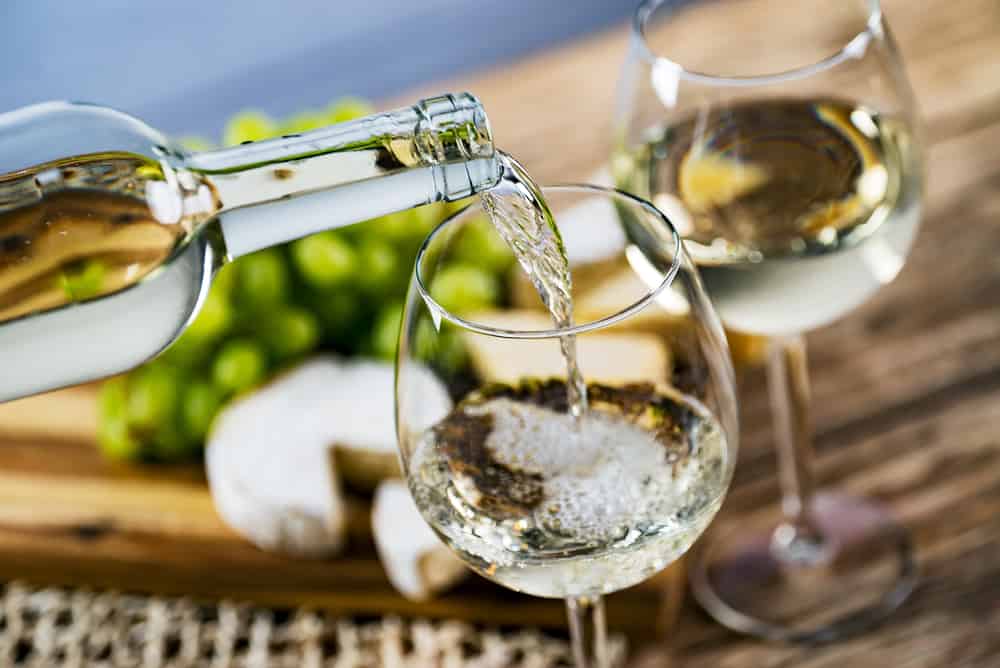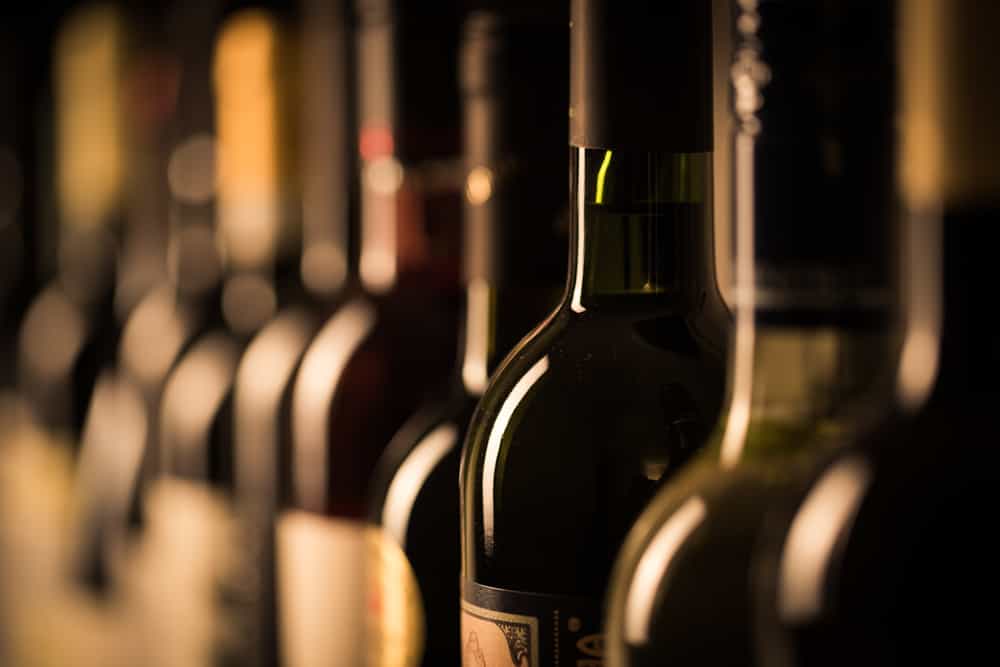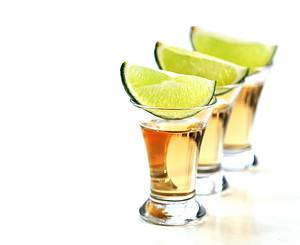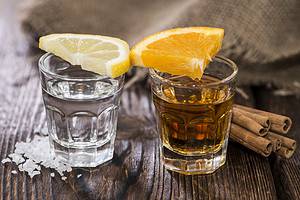Most people know that white wine should be served chilled, but relatively few understand the importance of storing wine at the correct temperature.
Not only is it essential to store your white wine at the right temperature, but you also have to ensure that temperature is consistent and that other factors are considered, such as humidity, light exposure, and more.
To help you make sure that you are properly caring for your white wine, we will explain everything you need to know, including the best temp to store white wine. As a bonus, we will even review proper storage procedures for other types of wine, including red, sparkling, and rosé.
Table of Contents
Best Temperature to Store White Wine
If you want to make sure that the taste, aroma, and overall quality of your white wine are preserved for as long as possible, you will want to make sure that it is stored in a location where the temperature will remain between 45° F and 65° F (7° C – 18° C). The general rule of thumb is that you want to keep your wine closer to 45° F, but as long as it remains within that range, you should not encounter any issues.
While this may seem like a fairly wide temperature range, the truth is anywhere in that range will help preserve the overall quality of your white wine. With that said, consistency is key. Regular temperature fluctuations can damage the wine, so you want to ensure the temperature remains stable.
If you are storing your white wine in a wine cellar, wine cabinet, or any other long-term storage location, you want to ensure the bottles are kept far away from any vent. The temperature fluctuations near heating and air conditioning vents can damage the wine.
This is why many people will store their white wine collection in a wine refrigerator or cooler, as this will keep the wine at a stable and ideal temperature until it is time for it to be opened and served.
Other Important Factors for Storing White Wine

While storing your white wine at a cool and consistent temperature is undoubtedly important, it is not the only thing you can do to ensure that your wine is preserved properly.
Avoid Exposing Your White Wine to Direct Light
You also want to make sure that the storage location is dark. Natural light, especially direct sunlight, can damage white wine and lead to it spoiling prematurely. Even just a few weeks of direct exposure to light can cause the white wine to lose its flavor.
By keeping your wine in the dark, away from light exposure, you can ensure that it will last and have the flavor that the winemaker intended.
Store Your Wine on the Correct Angle
You also want to make sure that your wine is stored on a slight angle with the cork facing downwards. If the cork faces directly upwards, it can dry out, eventually leading to cracking. Once the cork has cracked, oxygen will enter the bottle.
Oxidation of the white wine will cause the wine to spoil. Even slight exposure to oxygen will severely alter the flavor of your white wine.
Wine with a screw-top lid rather than a cork does not need to be stored at a different angle, but you should still avoid moving the bottle excessively.
Make Sure the White Wine Remains Still
Finally, you want to ensure that your white wine is stored where it will not be moved or shaken. This means finding a spot where it will not be exposed to vibration or moved regularly so you can dust the bottle or shelf.
The less your white wine is jostled, the longer it will last. Essentially, wine storage is all about stability. You want to ensure that your wine is stored where the temperature will remain consistent, it will not be moved or vibrated, and light exposure is kept to an absolute minimum.
Of course, these factors are less important for short-term storage; however, they are of critical importance if you want to maintain the quality of your white wine during long-term storage.
So, Where Should You Store Your White Wine?
If you are just storing a few bottles of white wine in the short term, you should be fine storing it in a basement or a wine rack away from direct sunlight. Obviously, you will want to put your wine in a cool location where the temperature will remain relatively consistent, but this is less important if you are only storing the wine for a few days.
You can invest in a wine fridge or a wine cooler for long-term storage of many bottles. If your home has a wine cellar, this would be the ideal way to store wine.
Just remember, you should store white wine in a dark place where the temperature remains consistent between 45° F and 65° F. Vibrations and movement should also be kept to a minimum, so an old fridge that tends to hum and vibrate is not a great idea.
For More Information About Wine Storage
If you want to know more about storing and serving white and red wine, we recommend reading the Hope Family Wines Guide to Proper Storage and Serving Temperature for Red & White Wine.
Types of Wine

Now that you know more about wine storage, we can go over some of the most common types of wine:
White Wine
- Sauvignon Blanc – This popular type of white wine originates from France. It is known for its fruity flavor, ranging from citrus and lime to mellow peach flavors. It pairs well with poultry, fish, and other types of seafood.
- Pinot Gris – This is a drier white wine that tastes less sweet than other types. Many pinot gris drinkers find they can taste hints of cinnamon, honey, and lemon. One of its most defining characteristics is its long and tingling aftertaste. It pairs well with seafood, cheese, and fresh vegetables.
- Pinot Grigio – Pinot grigio and pinot gris are extremely similar. In fact, they are made from the same type of grape. With that said, pinot grigio tends to be the more popular of the two and has a lighter and crisper flavor. Like pinot gris, it has vibrant, citrus flavors.
For more information about the differences between pinot gris and pinot grigio, we recommend reading Wine Folly’s Deep Dive – Differences Between Pinot Gris & Pinot Grigio.
Red Wine
- Cabernet Sauvignon – Cabernet Sauvignon, or cab sav, is one of the world’s most popular types of wine. It is made in just about every wine-producing country. It is full-bodied and carries intense flavors that tend to linger. While the flavor can change depending on where the grapes are grown, most cabernet sauvignons have dark fruit flavors, like blackcurrant and cherry. They also have spicy flavors.
- Pinot Noir – Pinot noir is a much lighter-bodied red wine with fruity and flowery flavors. It tends to have a smooth finish, which makes it more versatile for pairing with various types of food.
Sparkling Wine
As the name implies, sparkling wines are carbonated, meaning they have bubbles and fizz. There are numerous types of sparkling wine, such as champagne and prosecco, but all are known for their refreshing and light finish.
Rosé
Rosé is a type of wine that sits between white and red. It incorporates some of the grapes’ colors but not enough to be considered a red wine, giving it a unique pink color. While there are different types of rosé, most are characterized by their refreshing and light finish, which explains why they are often enjoyed on sunny afternoons.
For More Information About Wine
If you want to know more about serving wine, we recommend reading our guide to Opening a Bottle of Wine With and Without a Corkscrew.
Our guide to Opening a Bottle of Champagne can also be helpful, as champagne and other sparkling wine have unique demands.
Finally, if you are searching for a specific type of wine near you, you can use our Liquor Store Finder to locate the nearest retailer!






